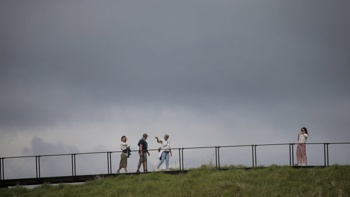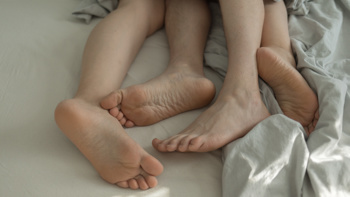Prime Minister Jacinda Ardern says whether the Covid-19 traffic light system is the "framework we need" will be reviewed after winter health pressures ease.
It comes after Covid-19 Response Minister Ayesha Verrall announced the country will stay in the orange traffic light setting through winter, noting while case numbers were declining there was "still high" pressure on the health system due to Covid-19 and other illnesses.
Health officials reported 5939 new cases of Covid-19 on Tuesday. There are 634 cases in hospital, including 15 people in ICU.
The seven-day rolling average of cases today is 5120, a significant drop from 6683 last Monday. The Ministry of Health has reported a further 23 Covid-related deaths.
"There's still significant pressure on hospitals from winter illnesses, so our current measures have an ongoing role to play in reducing the number of Covid-19 cases and hospitalisations", said Verrall.
"The health system usually sees elevated pressure through September, so we would be hoping to see some sustained reductions in both cases and hospitalisations then.
"Our response to Omicron is moving in the right direction, but loosening settings before we are completely on top of it risk infections going up again. We just need to stay the course a little longer."
Verrall said cases may have peaked at around 11,000 cases per day in mid-July.
"However due to the current high levels of Covid-19 infection in the community, the corresponding burden on primary and hospital care systems, and the highest levels of mortality seen in the outbreak so far the Covid-19 Protection Framework setting has been kept the same."
There will be no changes to case isolation and household contact quarantine requirements and the next review setting will be in September.
Ardern said as cases came down further they were hoping to in a month be "in a different position".
"It is clear that masks are still making a big difference.
"It is clear that isolation of cases still matters enormously and that's why orange remains important.
"In the future though we've also said that we'll continue to look at whether or not the traffic light system still continues to provide the framework we need.
"The time and place to do that will be as we come out of winter."
The purpose of the Covid-19 Protection Framework is to, "limit the risk of, the outbreak or spread of Covid-19".
Verrall said the framework was not being used to deal with pressures on the health system aside from Covid-19.
"When we make decisions on the Covid-19 framework, we're making them in order to mitigate the cases and transmission of Covid-19, and therefore the ongoing health impacts.
"Some of the things that are really important, like masks in the Covid-19 framework have those other benefits in terms of preventing flu transmission, but that's not why we promote them."
Verrall said a decision on second booster vaccines for people aged under 50 would be made "in the next few weeks". She said ongoing costs of providing the vaccines was not a factor in the decision.
National Party Covid-19 Response spokesman Chris Bishop said the delay "makes no sense" given Australia approved it for those over 30 a month ago.
Bishop also said it was time to get rid of the Covid-19 Protection Framework.
"We've spent 90 to 95 per cent of our time at either orange or red. We don't think there's a lot of utility in the framework and frankly we should just get rid of it, [replace with] some simpler rules."
Under orange people are required to wear a mask in most indoor settings. People can visit cafes and bars, attend gatherings and events, and go to gyms and hairdressers — with no capacity limits or distancing requirements.
The deaths reported today were: one person was from Northland, four were from Auckland, three were from Waikato, three were from Hawke's Bay, one was from Taranaki, one was from MidCentral, two were from Whanganui, three were from Wellington region, three were from Nelson Marlborough and two were from Canterbury.
One was in their 50s, one was in their 60s, eight were in their 70s, six were in their 80s and seven were aged over 90.
Ten were women and 13 were men.
There have been a total of 1688 deaths confirmed as attributable to Covid-19 in New Zealand, either as the underlying cause of death or as a contributing factor.
In the past seven days there have been an average of 16 deaths confirmed each day as being attributable to the virus.
Hundreds of people are in hospital with the virus across the country. The locations of these hospitalisations are: Northland (34), Waitematā (65), Counties Manukau (49), Auckland (80), Waikato (54), Bay of Plenty (26), Lakes (15), Hawke's Bay (37), MidCentral (20), Whanganui (15), Taranaki (22), Tairāwhiti (two), Wairarapa (seven), Capital, Coast (18), Hutt (17), Nelson Marlborough (15), Canterbury (97), West Coast (five), South Canterbury (25) and Southern (31).
The weekly rolling average of Covid hospitalisations is 645, down from this time last week when it was 787.
Unlike the eradication of the earlier Covid-19 variants in 2020 and 2021, Omicron would stay in the community until it was superseded by a new strain, said Welch, a computer science senior lecturer at Auckland University.
That meant it would probably fall to around 3000 new cases a day until the next wave arrived, he said.
Covid-19 has been directly responsible for one in seven recent deaths – and has already claimed five times as many lives as those lost in car accidents last year.
A Herald analysis showed that, in the week ending July 17 – around the time this second Omicron wave was peaking – 836 people died across New Zealand.
Of those deaths, 120 - nearly 15 per cent - were directly attributed to Covid-19.
Nearly one in five died within 28 days of being reported as a Covid-19 case.
"For the first time, Covid-19 has probably become the leading cause of death in New Zealand," Otago University epidemiologist Professor Michael Baker said.
"Fifteen per cent of people dying from Covid-19 is about the same proportion of people who die from ischaemic heart disease, which is currently our single biggest killer.
"It's also twice the number dying from stroke, which has long been number two."
And as health experts have constantly warned throughout the pandemic, that burden hasn't been falling equally across society.
So far, Māori and Pacific people have accounted for more than a third of hospitalisations with Covid-19 – and nearly two in 10 deaths where the virus was the underlying cause.
Another clear risk factor in hospitalisation and deaths remained age.
All but 46 of those who'd died from the virus were older than 60 - and two-thirds of deaths were recorded among people older than 80.
Baker has already aired concerns that average life expectancy – a measure that New Zealand was only one of three countries to improve over the first two years of the pandemic – could fall significantly because of Covid-19.
- Michael Neilson, NZ Herald
Take your Radio, Podcasts and Music with you









